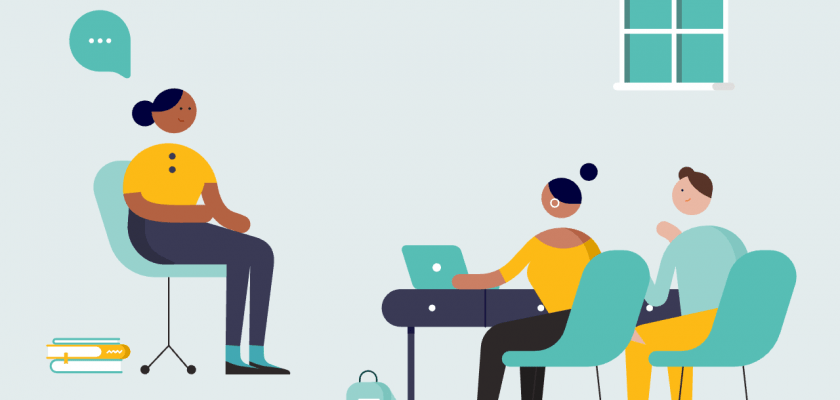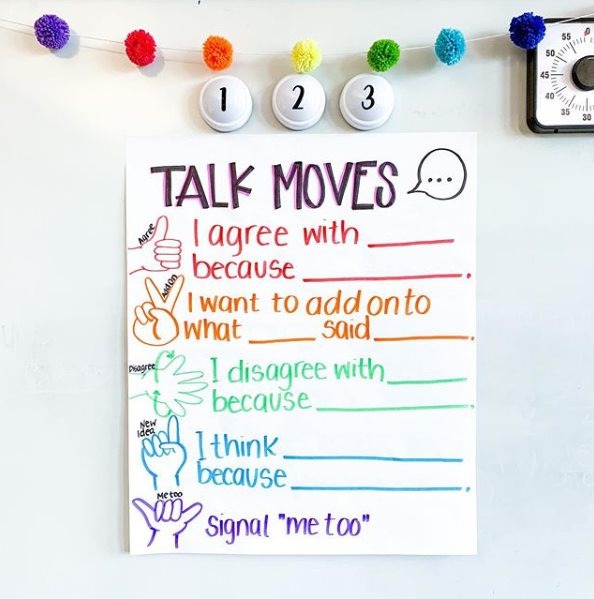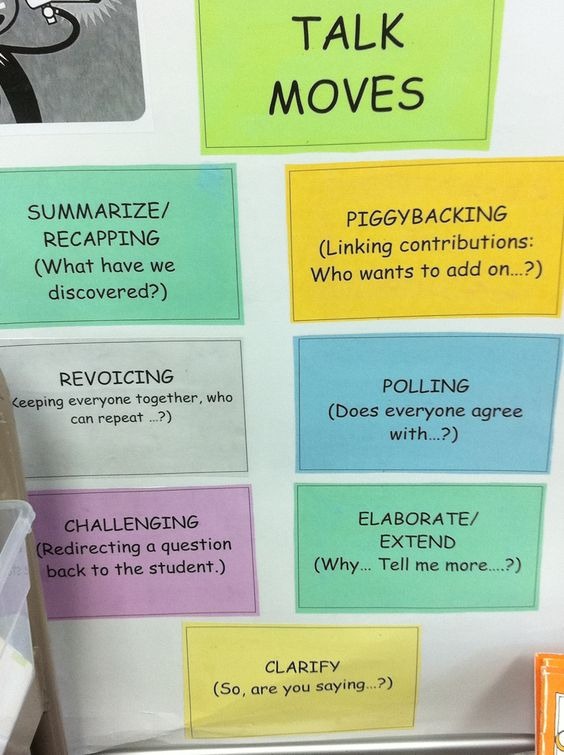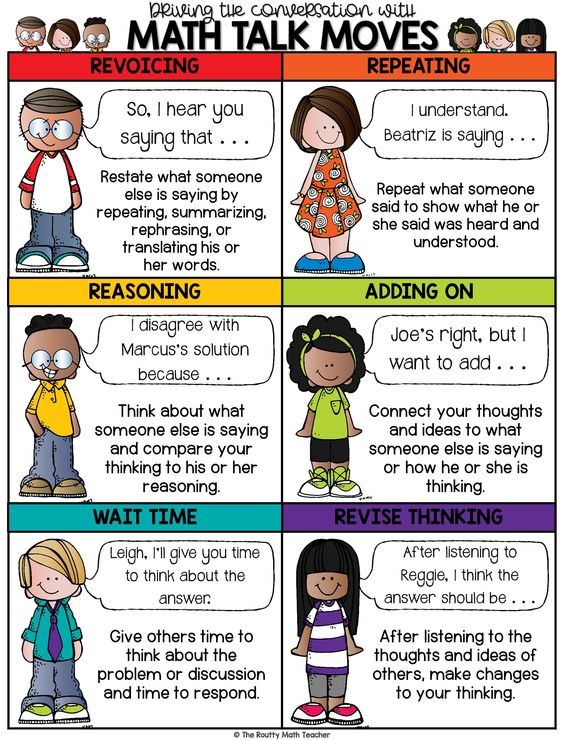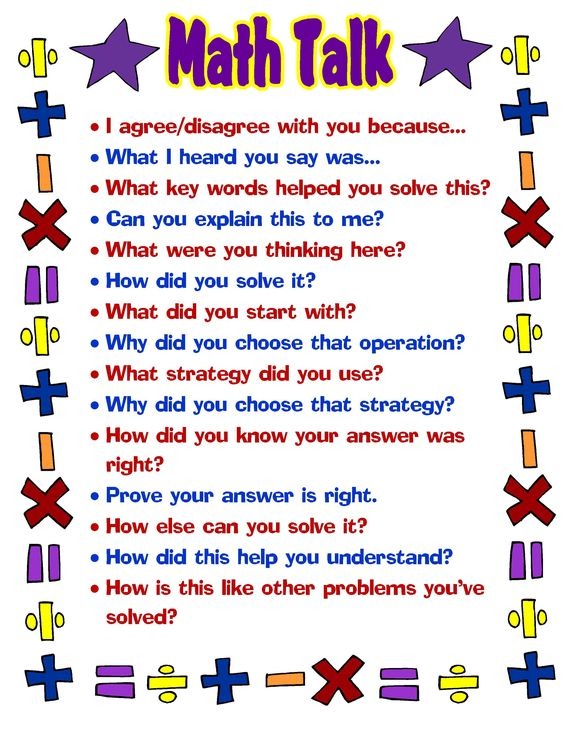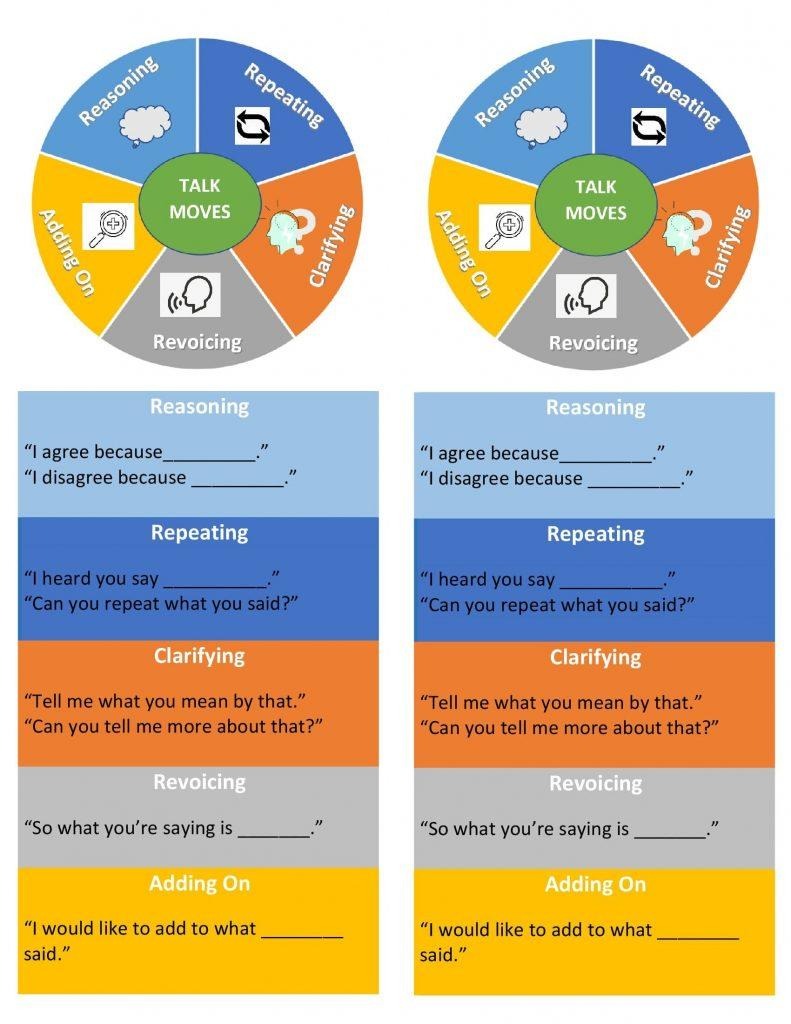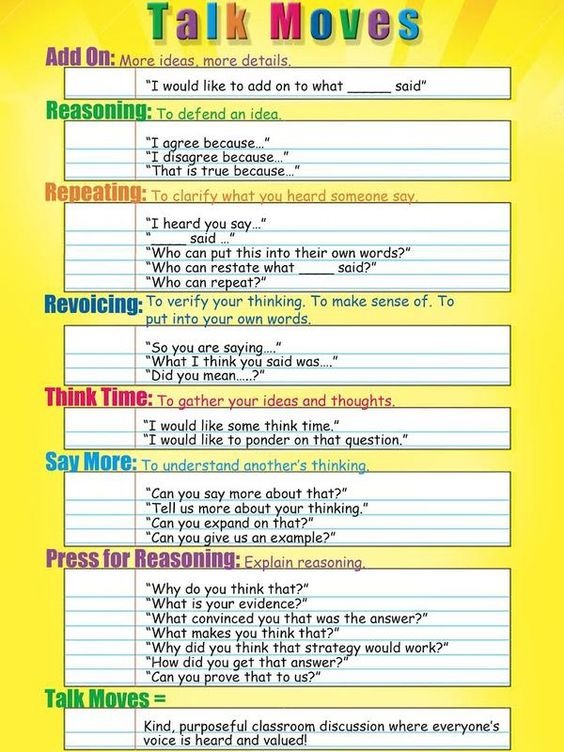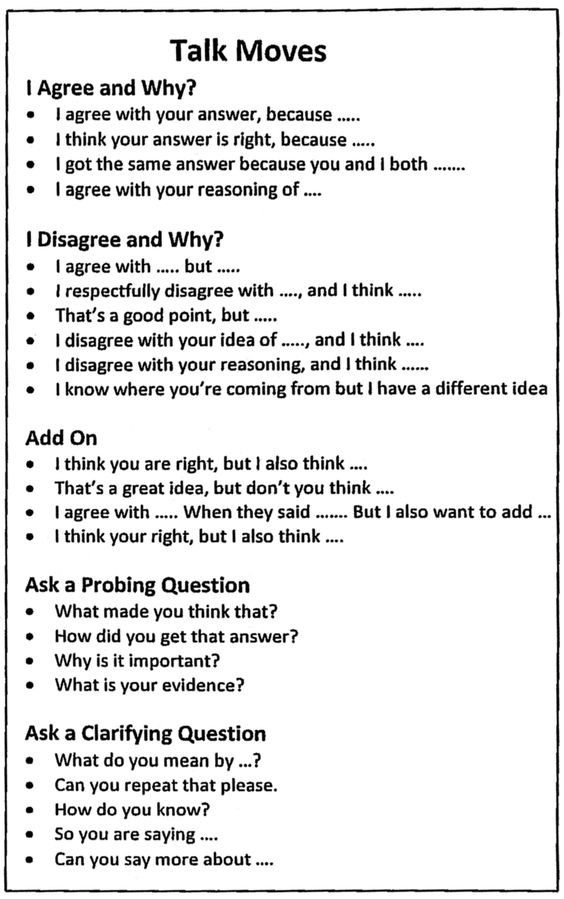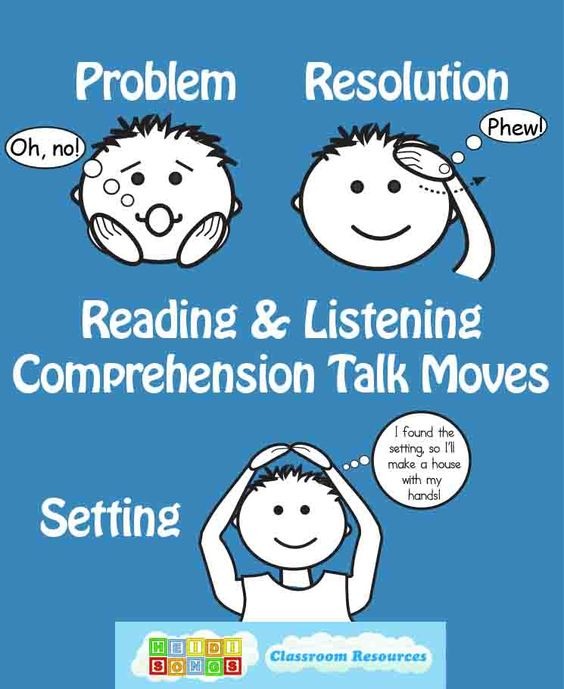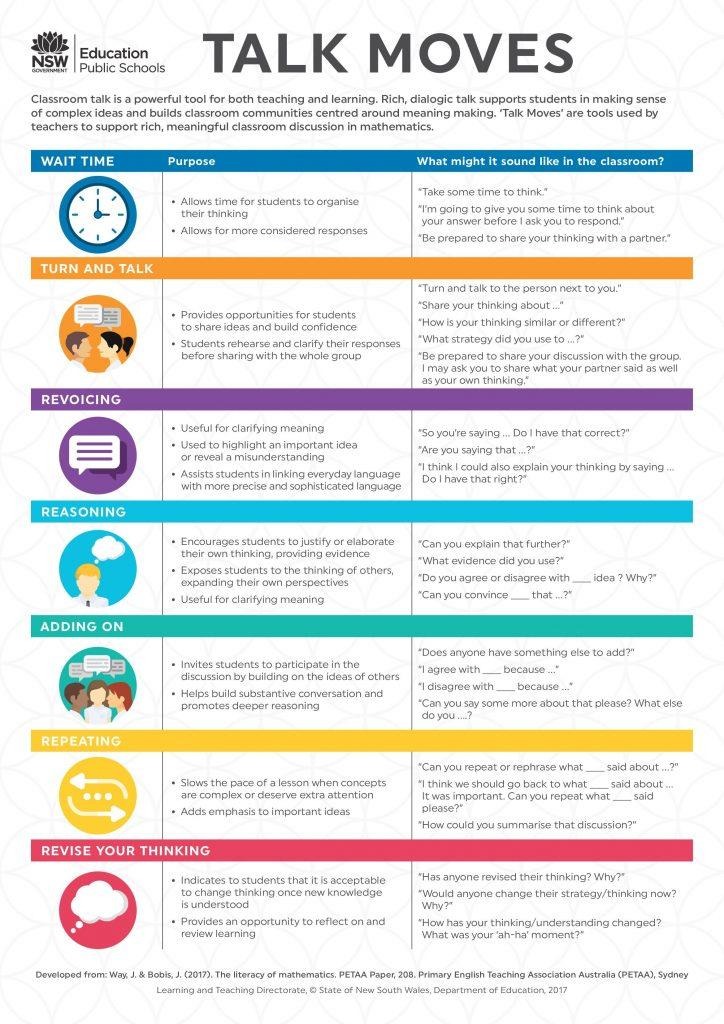Is sweeping the education world right now. It is creating a change in the way teachers lead and participate in discussions and improves communication. Let’s explore more about this unique methodology.
What are Talk Moves?
Talk Move strategy is a way of communicating that seeks to include everyone in a discussion and ensure that all students in a classroom environment are actively participating in the discussion.
One of the problems with instruction is the fact that many students have learned how to hide in the shadows when an open discussion is taking place so that they do not have to participate. This can be due to a number of reasons, including being a poor reader or feeling that they don’t have the skills to be an active learner.
This unique approach to learning and participation helps students all feel equally valued and thus removes some of the barriers to having all students in the learning community take part in the discussions.
Table of Contents
- What are Talk Moves?
- Benefits of Talk Moves
- Other Benefits of TM Strategies
- 7 Essential Strategies for Implementing Talk Moves
- 10 Go to Talk Move Prompts to Use in the Classroom
- Talk Moves Per Subject
- The Talk Moves strategies
- Other Resources
- Talk Moves FAQ

Benefits of Talk Moves
Sentence Starters
Sentence starters by Easy Peasy Primary Resources are one of the primary methods of starting the TM strategy going. By helping others get started with an analysis of what the discussion is about, it makes it easier for all students to participate.
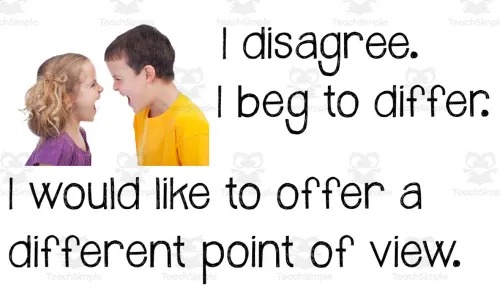
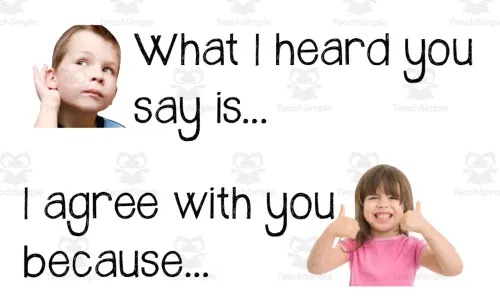
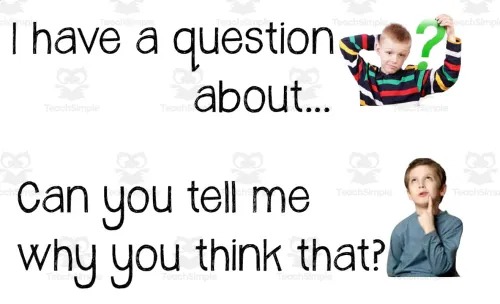
Personal Interaction
Talk Moves help kids to increase their level of social interaction through academic exploration. The goal is to create value for all students and for every participant to feel valued.
Why is it Important?
Without participation from all members of the class environment, it is impossible to achieve the educational goals that are required these days. Additionally, talk moves provide a more comfortable environment in which to help kids thrive in ways that promote growth in learning and respect for their peers and themselves.
Math Content and Reasoning Skills
One of the biggest values we get from using the strategy of TM is that it improves math and reasoning skills. By allowing both teachers and students to actively use this technique whenever they see fit, they open up more opportunities for learning.
When there is a more deep discussion about the details, more learning occurs across the spectrum.
Other Benefits of TM Strategies
- Feeling increased respect from peers
- Increasing personal and academic discussions
- Clarifying points with meaningful sharing and discussions
- Learning more about one’s peers and sharing ideas
- May increase the innovative spirit in a collaborative way
7 Essential Strategies for Implementing Talk Moves
There are many different techniques in implementing the idea of strategies within the classroom environment. Below are some of the most effective strategies using this technique.
1. Wait Time
Increasing the wait time after asking a question about an academic unit can help slow down the process of responding, which might lead to other students getting involved in the discussion. Shyer students or slower thinkers who are more hesitant to take part in class discussions are more likely to join in if they have more time to think.
2. Revoicing
Revoicing what a student says can help to reemphasize the main points. It may even cause the student who gave the response to rethink their idea once they hear it aloud. Additional responses from other students may result when using this technique.
3. Turn and Talk
The “Turn and Talk” technique allows students to turn to the person beside them and discuss their response after they have shared it with the larger group. This process allows the student who responded to consider someone else’s idea as they formulate their own. It should be emphasized to the student to hang onto their own ideas, while listening to the ideas of their peer. This helps both the person initiating the conversation and the peer they are talking to and increases confidence.
4. Increase Wait Time after Responses
Increasing wait time following a response is different than increasing wait time after you ask a question. Increasing wait time after a response may encourage other students to interact even after a student has asked a question, leading to further debate or discussion about a topic.
5. Restate Student Ideas
Restating student ideas helps clarify what the student said and encourages an open discussion on an important topic in a class discussion group. It can also spur new discussions on related topics and get the entire class community to participate, which is the goal of the program.
6. Applying Reasoning
Ideas are great but reasoning and judgment should also play a large role in the process. By applying reasoning to a statement made by a student, you force students to look at how they can use the idea they had in a practical way and apply it to real-world situations. This type of discussion is especially important in the fields of science and math where logic and rational thinking is important to come to conclusions on problems and situations. But the reasoning is important in all areas, including Literary discussions and brainstorming sessions so that students help each other weed out the information that doesn’t work and focus on what does.
7. Revising Your Thinking
The goal of this system is to encourage participation. If 100% participation is the result of your efforts, it will be an accomplishment. But beyond that, participants should be open-minded enough that listening to peers voice their ideas should help them curate ideas and fine-tune their own thinking. This might be referred to as “self-editing.” Consider when you are writing a paragraph or an essay for class. If we edit ourselves when writing, why not edit ourselves in the process of thinking out things while discussing important topics with peers. This is not to say that we should forget our idea. If it’s a good idea, no one should influence you to change it. But hearing others’ views can help us consider other aspects we might not think of otherwise.
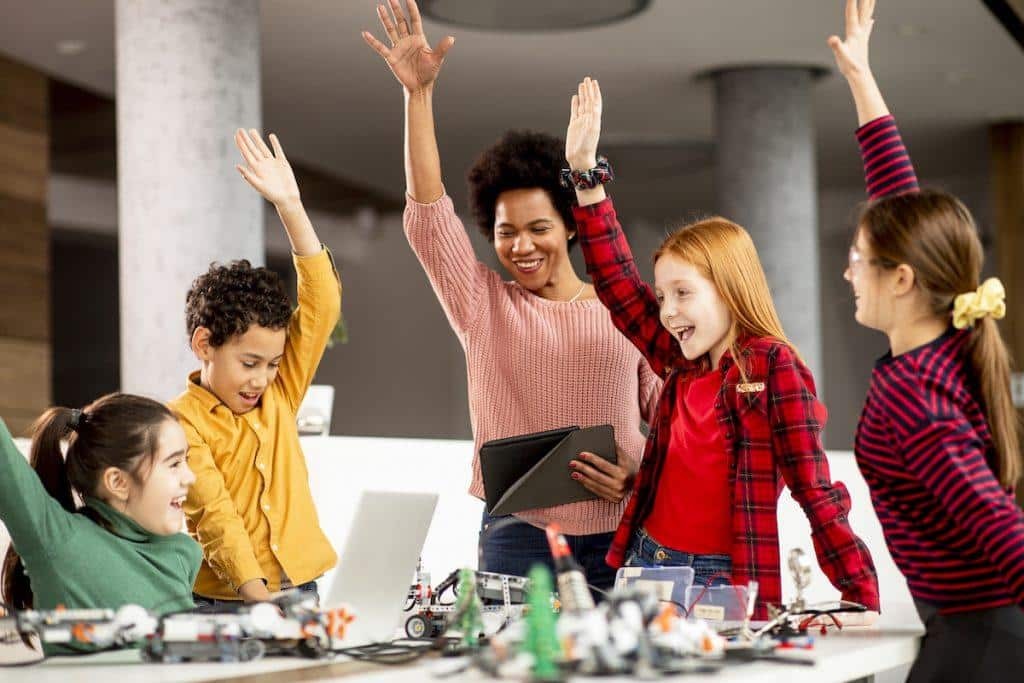
10 Go to Talk Move Prompts to Use in the Classroom
- Lesson On Hand Signals From Teeducate
This prompt includes the primary hand signals of the system. Some examples include: “I think ______ because ___________.” This kind of statement helps students validate their ideas and refine their thinking.
- Mystery Prompts From Journal Buddies
These mystery prompts give all participants an opportunity to play Sherlock Holmes for a day and test their deductive reasoning skills. This is an excellent way to learn how to use logic from facts and information and also helps analytical thinkers step forward and help the group come to a conclusion.
- Important Prompts From Otosection
This collection of prompts include all of the major types of aides that help students thrive in the collaborative classroom and encourage discussion. From “summarizing questions” like “what have we learned?” to polling with questions like “Who agrees with this assumption?” students can get inspired with these 7 short prompts.
- Math Moves From The Routy Math Teacher
These math ideas focus more on the math topic and help students use the strategies to draw conclusions and solve difficult problems as a group.
- Math Critical Questions From Weebly
This idea prompt emphasizes the important questions that should be asked when doing math problems. They include things like “I agree/disagree because…” and “What strategy did you use to solve this?” All of these questions will get students thinking about the process of math problem-solving, which is often required on the standardized tests.
- Decision Wheel From Olathe Public Schools
This nicely-done set of prompts put out by Olathe School System illustrates a great way to use sentence starters and prompts to start new conversations or liven up a current one.
- Anchor Chart By Teachers R Us Homeschool
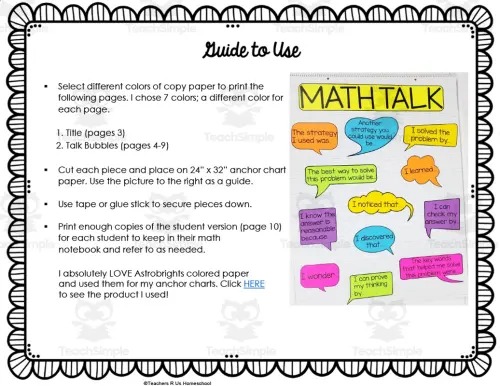
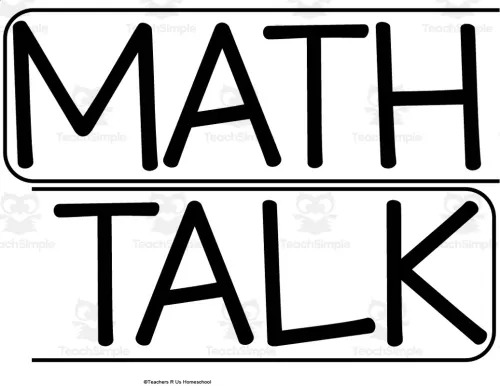
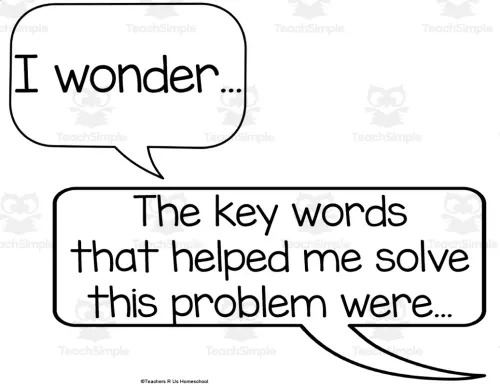
This Math talk anchor chart by Teach Simple is an excellent but simple tool to spur on conversations on the process of math reasoning.
- Poster By Mrs. Pipkin’s Peacock
This engaging poster takes all of the aspects of the system and combines them into one helpful collection of prompts. This one could easily be used with any subject.
- Handy Reference Sheet From Opening Paths
This page includes the main prompts needed to make the strategy successful that focuses on whether others agree or disagree, as well as the “add-on” strategy.
- Simple Poster From Heidi Songs
This guide for younger kids helps them focus on the basics of the system without making things too complicated.
Talk Moves Per Subject
Below is a shorter list of example Talk Move prompts that you can use according to your subject matter:
Math Talk Moves
The TM site itself is a good resource for Math teachers to focus on the reasoning aspect of the strategy to improve math reasoning skills and logic.
Science Talk Moves
The Olympic Math and Science Partnership developed this resource to help teachers implement and organize their TM strategies in the classroom.
Language Arts Talk Moves
The English Learners Success Forum is a great resource for language arts teachers to implement these strategies in literary discussions. These strategies would also be helpful in a brainstorming or planning session for writing essays.
History Talk Moves
This site is a great resource for History teachers and TM could easily be implemented using the other resources available on this site.
Can be used at any time that it would benefit the classroom and turn a boring, ordinary discussion into a lively one that includes all students. The key to the best education is always to teach to every student and focus on leaving no one out of the discussions. Interactions with peers is important so that students can get an idea of how others think and complement their own thinking with their ideas.
This is not to say that they should change their stance on something if they know it is accurate. But bouncing ideas off of others can serve to educate all participants and improve their social skills, as well.
Other Resources
Talk Moves FAQ
TM is a strategy that allows the students to be the focus of academic discussions using a variety of prompts and techniques that include the origin of the thinking processes and reasoning, and whose goal is to get 100% participation through positive interaction of all pupils.
It allows positive and productive discussions between peers in the classroom and contributes to individual student engagement and productive thinking strategies.
Anytime teachers feel that the Talk Moves system would help bring out a shy student or a non-participator, is a good time to use the strategies in this idea. Further, anytime discussions are in a lull, TM provides a way to jumpstart a discussion to include all learners.
